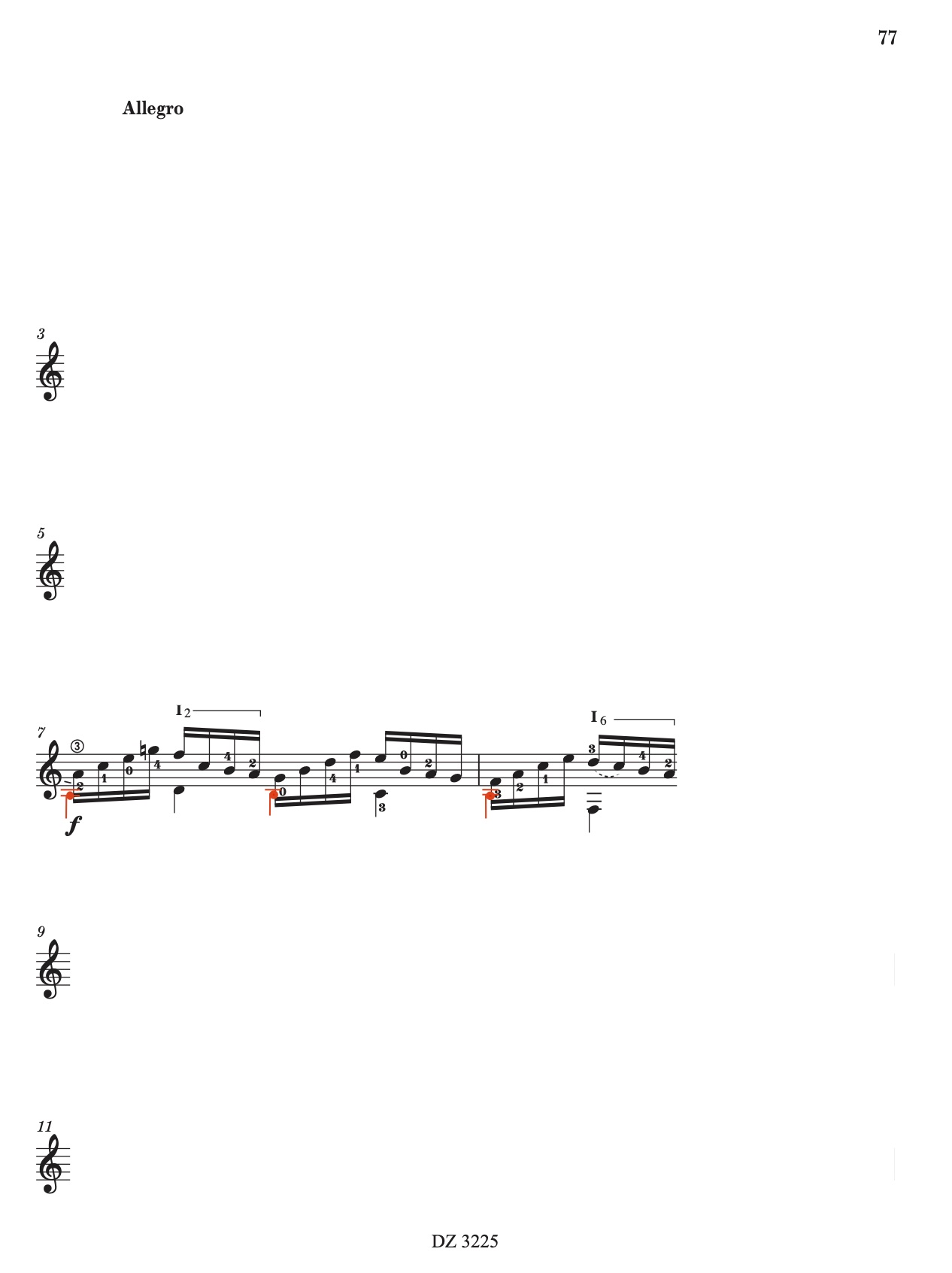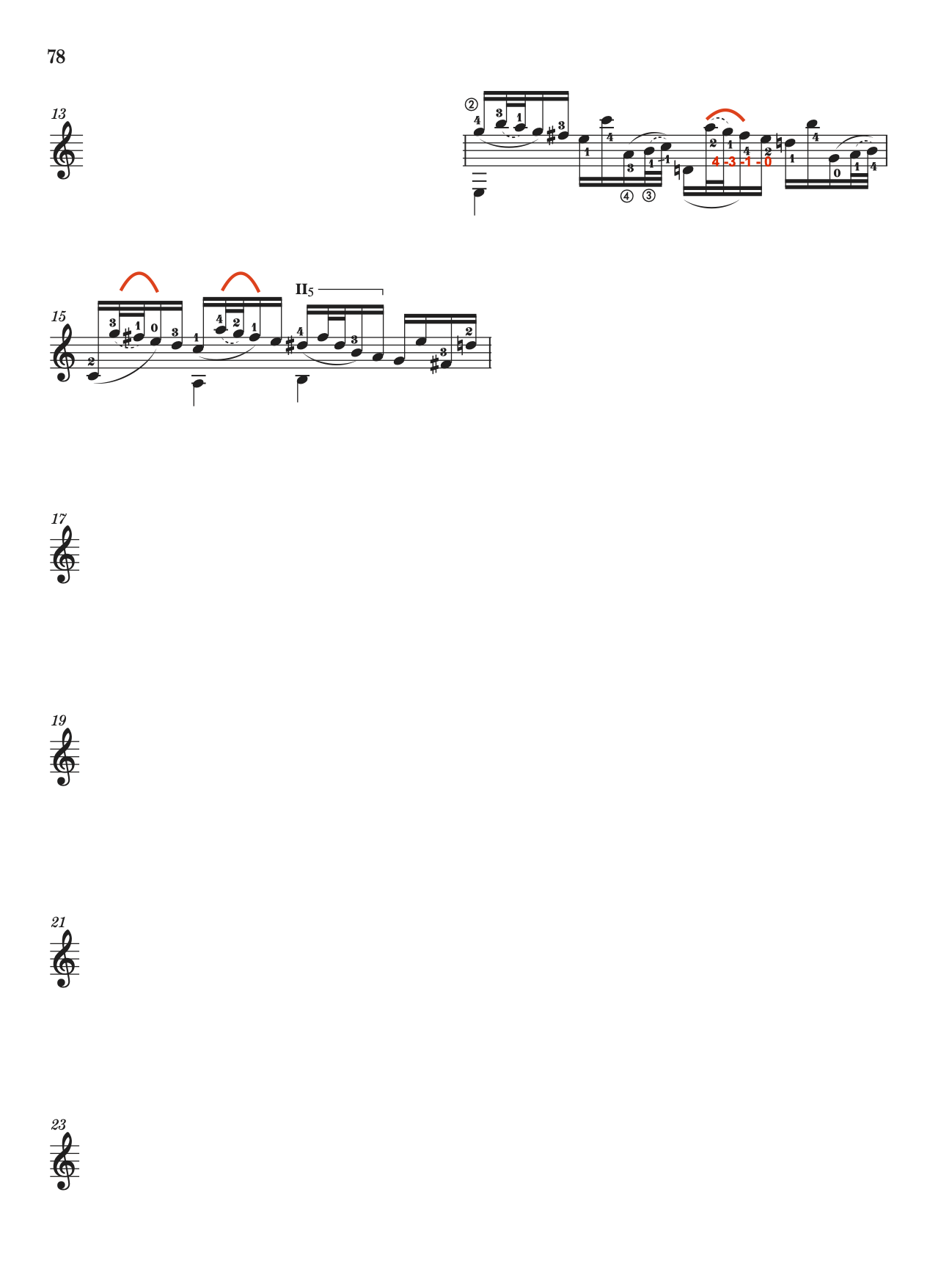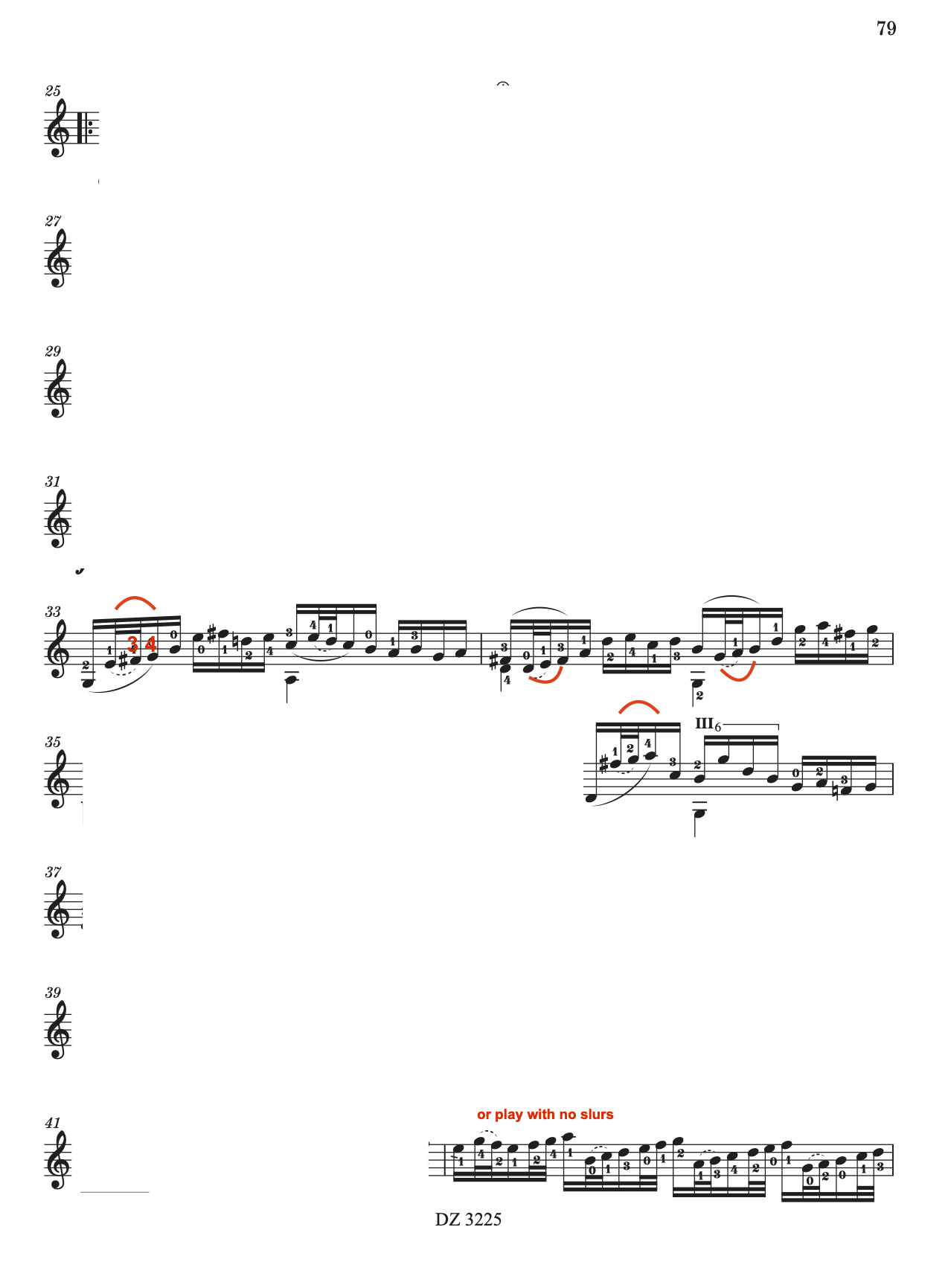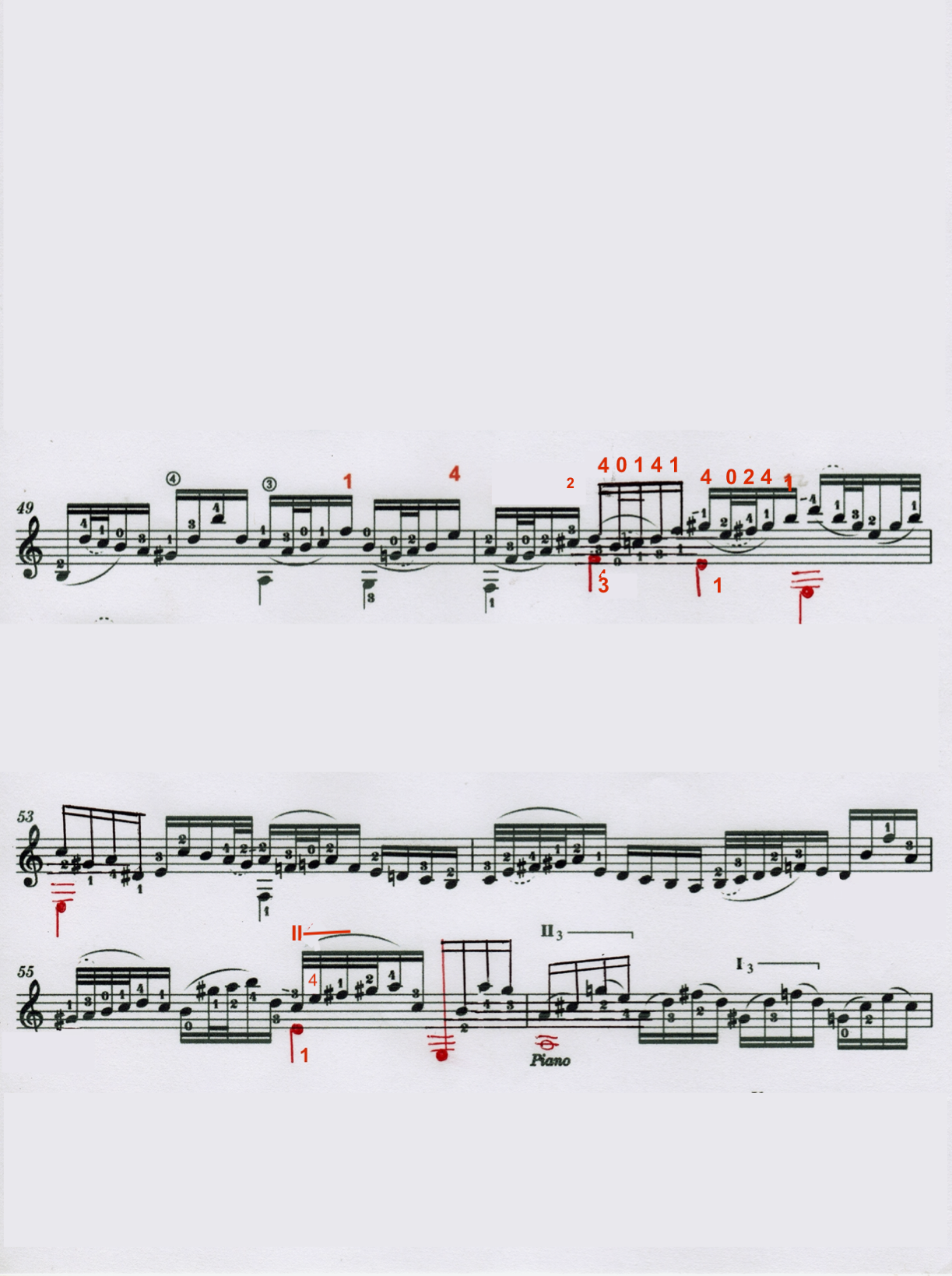Here are some updated fingerings and bass notes for the Allegro, BWV 1003. The new bass notes on the last page are recommended changes, as they conform better to Bach's established structure; however, the first three pages simply present alternate, equally viable, options. There are extra added basses that some players may like and, also, three-note slur options that guitarists may wish to try.
Regarding the updated bass notes in mm. 50-56, arrangers may find our process of revision interesting to look at in some detail. In m. 50, our original version had a descending bass-line and, as the music became more exciting, the bass slowed from quarter-notes to half-notes, decreasing the energy, rather than helping to increase it. Following a series of quarter-notes, we had a half-note F followed by a half-note E. Some years after publishing our book, as we learned more about various Baroque schemata [contemporaneous stock musical patterns or formulas], we saw that this one, which is essentially a way to prolong a note using octave displacements, was exactly what we had been looking for, for years, because of how effectively it keeps the tension mounting. For example the half-note F was replaced by two quarter-note Fs with an octave leap, and similarly for the half-note E that follows – definitely more exciting.
In m. 53, the low E-F better reflects Bach’s harmonic motion at his deceptive cadence. After that F is sounded, the ear wants to hear E. However, Bach makes us wait for it until m. 55, so we removed ours from m. 54.
At the end of m. 54, there is a D in the bass. Oftentimes, if no new bass note is introduced by Bach, then the most recent sounding bass remains in effect. Here, we can think of that D as continuing on over the barline, for another two beats; and if a player so choses he or she may allow that D to keep sounding from the end of m. 54 through the first two beats of m. 55. The D then moves up to E for the 6/4 cadential formula. Without our added E at beat 3, then, at beat 4, Bach’s E (an octave higher than ours) has a satisfying sense of arrival. We needed to keep the significance of that important moment, and the sounding of the lower E satisfies that need. Then, the resolution over the barline requires a bass note in the correct octave, hence, our whole-note A.
Understanding and arranging passages like these can be a long and circuitous process, in which we need to combine our intellect, our ear, and our intuition, gradually chipping away at the obstacles–and it is extremely rewarding to find solutions that satisfy all the parameters at play.




Regarding the updated bass notes in mm. 50-56, arrangers may find our process of revision interesting to look at in some detail. In m. 50, our original version had a descending bass-line and, as the music became more exciting, the bass slowed from quarter-notes to half-notes, decreasing the energy, rather than helping to increase it. Following a series of quarter-notes, we had a half-note F followed by a half-note E. Some years after publishing our book, as we learned more about various Baroque schemata [contemporaneous stock musical patterns or formulas], we saw that this one, which is essentially a way to prolong a note using octave displacements, was exactly what we had been looking for, for years, because of how effectively it keeps the tension mounting. For example the half-note F was replaced by two quarter-note Fs with an octave leap, and similarly for the half-note E that follows – definitely more exciting.
In m. 53, the low E-F better reflects Bach’s harmonic motion at his deceptive cadence. After that F is sounded, the ear wants to hear E. However, Bach makes us wait for it until m. 55, so we removed ours from m. 54.
At the end of m. 54, there is a D in the bass. Oftentimes, if no new bass note is introduced by Bach, then the most recent sounding bass remains in effect. Here, we can think of that D as continuing on over the barline, for another two beats; and if a player so choses he or she may allow that D to keep sounding from the end of m. 54 through the first two beats of m. 55. The D then moves up to E for the 6/4 cadential formula. Without our added E at beat 3, then, at beat 4, Bach’s E (an octave higher than ours) has a satisfying sense of arrival. We needed to keep the significance of that important moment, and the sounding of the lower E satisfies that need. Then, the resolution over the barline requires a bass note in the correct octave, hence, our whole-note A.
Understanding and arranging passages like these can be a long and circuitous process, in which we need to combine our intellect, our ear, and our intuition, gradually chipping away at the obstacles–and it is extremely rewarding to find solutions that satisfy all the parameters at play.




